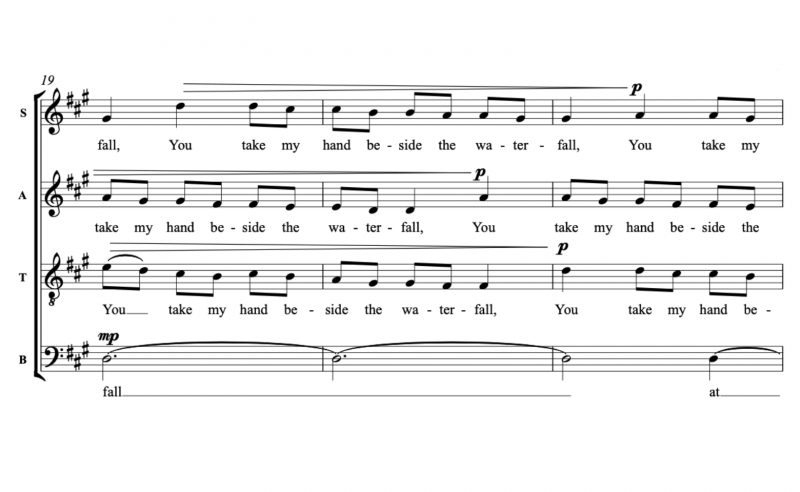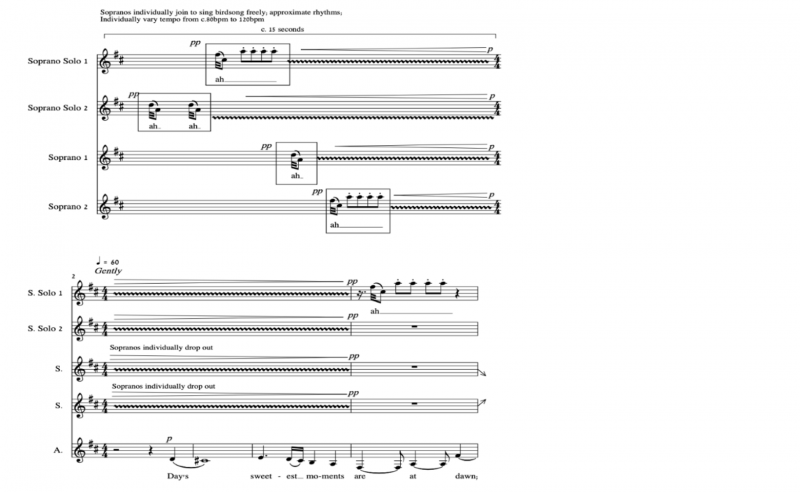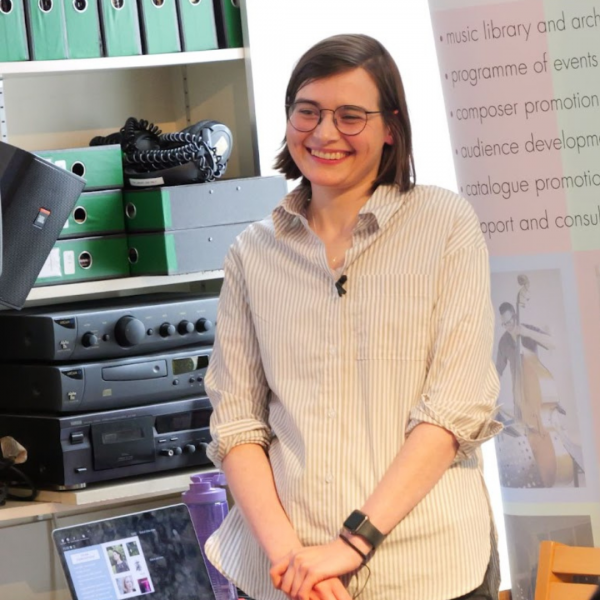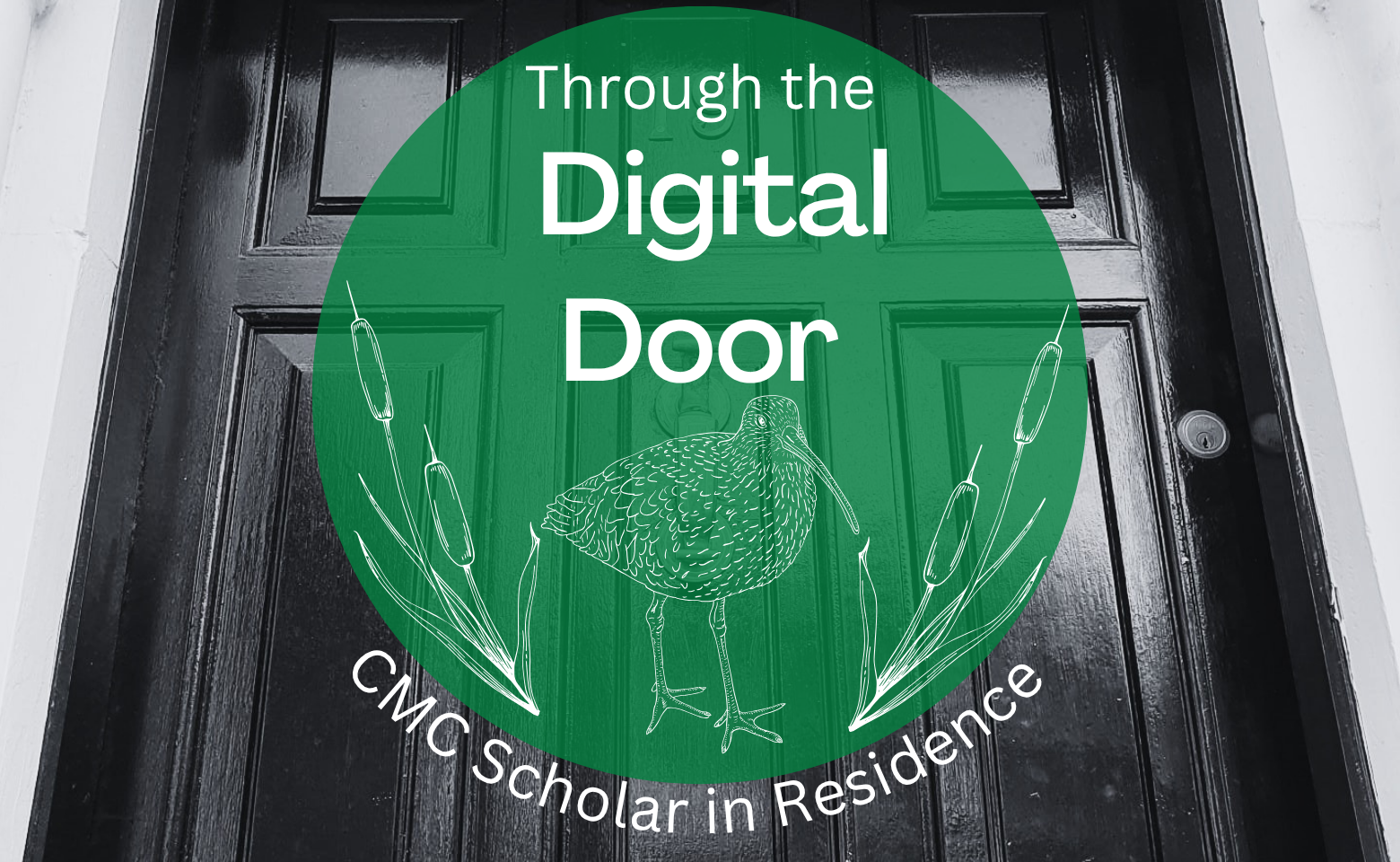Through the Digital Door: The Natural World through the Lens of Choral Music
This feature is adapted from CMC Scholar in Residence Laura Sheils’ public talk ‘Sounds of our Time: The Natural World Explored in Irish Choral Music’ presented at the CMC Library in May 2025, available to watch back on Youtube. Find out about Laura’s upcoming talks by following @CMCIreland on social media or signing up to the CMC newsletter.
The natural world has been a source of inspiration for composers throughout music history, with instrumental and vocal/choral compositions seeking to capture pastoral settings, the elements, and wildlife. The ever-increasing effects of climate change and the declining population of species have motivated contemporary composers in Ireland and abroad to create music that draws our attention to the environmental crisis and encourages us to listen more attentively to the nature that surrounds us. Emma O’Halloran, Eoghan Desmond, Jonathan Nangle, and Áine Mallon are just some Irish composers whose choral work sheds light on evolution, birdsong, and the beauty of the natural world.
Emma O’Halloran (b. 1985): Natural History (2015, rev. 2022)
Emma O’Halloran’s Natural History sets extracts from the naturalist and explorer Alfred Russel Wallace’s ‘The Malay Archipelago’, published in 1869. Originally composed in 2015 for the early music ensemble Gallicantus, the work was revised for SSATB forces and performed by the Mornington Singers, conducted by Orla Flanagan, in November 2022. The text used in Natural History focuses on specific numbers of specimens of various creatures, including reptiles, birds, and insects. The composer recounts how when she read “The Malay Archipelago”, she:
kept returning to the list of all of the different species that Wallace discovered. Thousands upon thousands of birds, reptiles, mammals, insects. It felt important to meditate on that, to give this list the sanctity and reverence it deserves, and to remember that we’re a part of this natural world too and that it’s something we should fight for.
Listen to Mornington Singers perform Natural History:
O’Halloran’s synthesis of past and present sounds and techniques in the piece brings the list of numbered specimens to life in a compelling manner. The pedal tones and parallel fourths and fifths generate an archaic tone in the music, while the jaunty syncopated rhythms and indeterminate sections ensure a contemporary account of Wallace’s discoveries. O’Halloran deftly draws us into her soundworld and the world of the discoverer, teasing us with her extended diction, catchy motifs, and fluctuating textural density as she introduces us to the various specimens in ‘The Malay Archipelago’.

Image credit: Emma O’Halloran – Natural History (2015 rev. 2022) for SSATB Choir
Eoghan Desmond (b. 1989): An Gleann Mór (2022)
In recent years, Eoghan Desmond has turned his focus to setting poetry on themes of nature, such as Beloved (2023), I Am (2024), and Guthanna ar an gCnoc (2025), due to his concern over the ongoing environmental crisis. He states
I’m writing environmental music because I’m deeply stressed. It’s kind of the only real outlet that I seem to have. I’ve always loved the natural world and appreciated it [...] I am writing music about it in the hope that people hear it and sing it and go ‘Oh yeah, the world is actually quite beautiful
Desmond, 2025.
A work that could be deemed the beginning of this focus on the natural world is An Gleann Mór (2022) for SATB voices, a setting of a poem by Grace Wilentz, inspired by the landscape of the Devil’s Glen in County Wicklow. The piece was premiered by Chamber Choir Ireland, conducted by Paul Hillier, in June 2022. Desmond illustrates the Devil’s Glen throughout the piece on both a small and broader scale, through cascading melodies and textural scaffolding. The sopranos, altos, and tenors repeat a descending stepwise phrase, evoking the streaming water. Each note is repeated on the descent, engendering a lilting motion that enhances the music’s tranquil atmosphere.
Listen to Chamber Choir Ireland perform An Gleann Mór:
CMCIreland · [EXTRACT] Eoghan Desmond - An Gleann Mór (2022). Clip shared courtesy of Eoghan Desmond.
The vocal waterfall expands to a three-part imitative ostinato that continues throughout the verses, as the bass emerges with the melody. An Gleann Mór is an accessible, compelling piece for choirs, illustrating the Devil’s Glen and creating a peaceful ambience through the repeated stepwise motifs and expanding textures.

Image credit: Eoghan Desmond, An Gleann Mór (2022)
Jonathan Nangle (b. 1981): O Curlew (2023)
O Curlew by Jonathan Nangle was commissioned and premiered by New Dublin Voices in 2023. Nangle sets W.B. Yeats’s He Reproves the Curlew, a poem of lost love and dying passion. The curlew's haunting call embodies Yeats’s yearning for a love now lost, his grief echoed and traumatised through nature. Nangle focuses on lamenting the curlew, a bird whose population has diminished over the past century with only 95 breeding pairs remaining across Ireland, as of early 2025. This isn’t Nangle’s only exploration of the natural world in his music. His recent work incorporating field recordings and instruments, Blue Haze of Deep Time (2025), which was premiered by Crash Ensemble at New Music Dublin this year, invites us to consider not just what the sea looks like, but what it sounds like.
O Curlew is set for SATB voices and SATB semichorus, the latter embodying the haunting cry of the curlew. The semichorus opens the piece with a plaintive call that repeats throughout the piece, above which the full choir communicates Yeats’s words. The sedated harmonic ostinato, choral homophonic motion, and syllabic setting of the main chorus create a tranquil, mournful tone that is sustained throughout O Curlew. The silence between phrases within Nangle’s piece contributes to creating an ambient, meditative atmosphere and offers a moment for the curlew or choir’s call to echo into the ether.

Image credit: Jonathan Nangle, O Curlew (S.A.T.B. and S.A.T.B Semichorus)
The conclusion of the piece is particularly powerful, Nangle indicating for a small number of singers (6–8) to mimic the calls of the curlew through whistling. He states on the score
Favour the ascending, bubbling cry, but do include others [...] The desired result is haunting, not cacophonous.
All the other voices revert to a sustained ‘oh’, repeating the same harmonies five times consecutively, divided by a bar of rest, gently building and fading in dynamics. The piece concludes in a haunting manner, with only the whistling cries of the curlew, dissolving into nothingness, a powerful evocation and reminder of the bird’s dwindling population.
Listen to New Dublin Voices perform O Curlew:
Áine Mallon (b. 1994): Liminal Dawn (2022)
Áine Mallon’s Liminal Dawn (2022) is another beautiful evocation of birdsong and a further reminder of the sharp decline in bird populations. Set for SATB voices and soprano soloists, Mallon explains in the programme note how
[T]his piece pays homage to the songsters of the springtime and laments the loss of future song, and the potential of a silent Spring to come.
Liminal Dawn sets Ella Wheeler Wilcox’s ‘Dawn’, and is a reflection on Ellis Gibbons’s Long Live Fair Oriana (1601), Oriana, which translates to ‘Sunrise’, being a nickname for Queen Elizabeth I.
We’re immediately transported to the pastoral scene of the day dawning, the world slowly waking up, and the chorus of birds singing ‘to one another in anticipation of the new day and the hope that it brings’ (Mallon 2022). Sopranos, comprising two soloists and those in the main ensemble, individually join the texture to imitate birdsong in approximate rhythms and tempi. Mallon’s choice to set the opening in a controlled aleatoric manner reflects the natural call of the birds – the singing and timing isn’t artificial and methodical. The sopranos’ repeated melodic intervals and folk-like embellishments further capture the scene of birds singing at dawn. As the piece progresses, the soloists continue to embody birds in antiphonal dialogue above the other choral voices. The composer is quite innovative with her textural organisation throughout Liminal Dawn, balancing between sparse moments of just bird song in the diaphanous upper voices and instances of gradually layered phrases, building to a climax. The piece is essentially a dialogue between the soloists and the choir, who continue to tell us the story beneath the floating bird song.

Image credit: Áine Mallon, Liminal Dawn (2022)
While Desmond’s piece illustrates the beauty of the landscape around us, both bird-based choral works by Nangle and Mallon demonstrate the variety of ways in which choral music can emulate bird song and remind us of the devastating decline in bird populations.

Laura Sheils is a PhD researcher, choral composer, and music educator based in Dublin. Her doctoral research focuses on the choral works of contemporary Irish composers Rhona Clarke and Eoghan Desmond, analysing their approaches to text setting and their respective compositional styles.
As part of her CMC residency, Laura is presenting a series of free public talks on Irish Choral Music highlighting works by contemporary composers, writing online articles spotlighting aspects of Contemporary Music Centre’s archive and curating a new choral catalogue from its collection.
If you would like to contact Laura in relation to her research email scholar@cmc.ie

